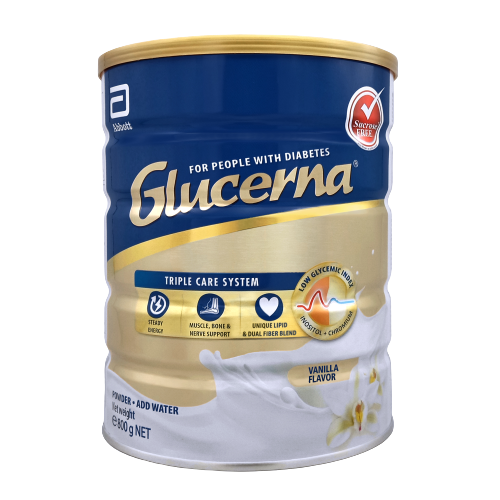Glucerna triple care
- Main Image
-

- Subtitle
- Complete and Balanced Nutrition For People with Diabetes
- Title
- Glucerna® Triple Care
- Detail Page Path
Weight loss for people with diabetes. We give you some tips on how to eat well and healthily to help keep your diabetes in check, if your doctor and dietitian recommends that you may need to lose weight.
A healthy diet is one of the best tools for managing diabetes. A regular schedule of meals or snacks that includes the right nutrients in the right amounts, will help keep glucose levels, blood pressure, cholesterol levels and weight under control.
Some patients may also be encouraged to lose weight, to keep their diabetes in check; always seek your doctor’s advice to find out if weight loss is a suitable option for you.
At the same time, consistently eating well can be a challenge. No single diet is right for everyone. That is why it is important to identify individual needs and preferences and plan accordingly. Read on for more diet tips that can help you to lose weight healthily.
Create personal guidelines for your daily diet with your doctor or dietitian. This should include the amounts and types of foods to choose from as well as the frequency of your mealtimes.
Discuss with your healthcare team: should you focus on weight maintenance or weight loss as your central objective? Be sure to consider the effects of medications including insulin and that of exercise on your diet plan.
Include all of the food groups in your meals. This means a balanced diet of vegetables, fruits, lean meat, fish and poultry, beans, low-fat dairy products, and wholegrains.
Enjoy every bite, while using healthier ingredients such as fresh herbs to marinate fish and chicken for your meals. Another useful tip to know: A fibre-heavy meal plan helps to fill you up and makes you feel satisfied with fewer calories.
It’s as important to choose the right carbs (carbohydrates). The Glycemic Index (GI) is a value assigned to foods with carbohydrates, based on their effects on blood glucose levels after each meal.1 For example, foods with a low GI, such as lentils, prunes, or apples, will be digested and absorbed more slowly than carbohydrate-heavy foods like white rice, baked potatoes which contain high GI.
Foods high in monounsaturated fatty acids (MUFA), such as nuts, cashews, avocados, olive oil and canola oil, also have a low GI. Diets high in MUFA may have beneficial effects on blood lipid levels compared to a high carbohydrate diet.
If you are advised by your dietitian to reduce your calorie intake, try reducing the portion size of your meal. Overestimating portion sizes can result in extra calories and, in some cases, more carbs.
It’s good to keep in mind that you’re in control of the portions you eat, whether you’re at home, dining out, or visiting with family or friends.
So practise sizing up your portions by using measuring cups and spoons when possible. Or use the rule of thumb when measuring devices aren’t convenient: the palm of your hand, for instance, represents roughly one serving of meat or fish.2 A fist can approximate for one serving of fruit or vegetables.
Make a habit of buying individual-sized portions of raisins, canned fruit, yogurt, and cheese sticks whenever possible; these do the portion calculation for you. Another tip: spread your calorie intake throughout the day with small but more frequent meals and snacks to help keep your glucose levels steady.
Keep a diary to track the kinds and amounts of food you eat, along with your glucose levels and weight – see how the foods in your diet influence glycemic control and weight management.
References:
1 American Diabetes Association. Retrieved on Aug 31, 2015
2 WebMD. Retrieved on Aug 31, 2015 from: http://www.webmd.com/diet/control-portion-size.
SG.2022.29988.GLU.1 (V1.1)
Stay Connected